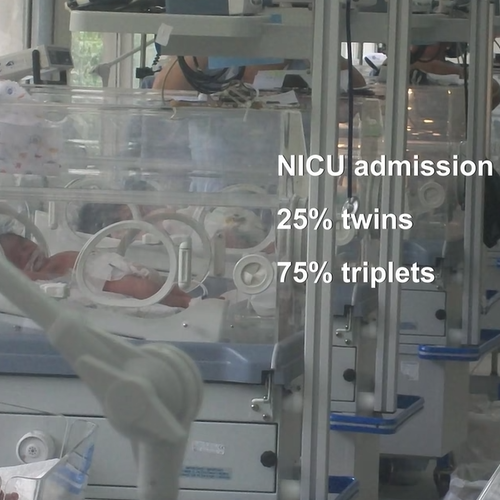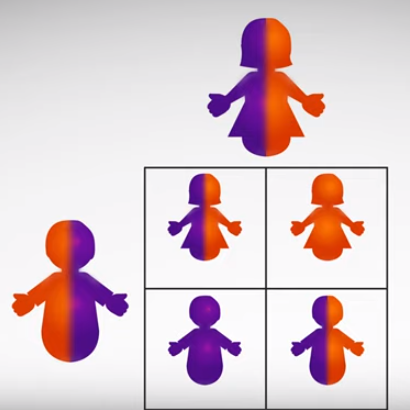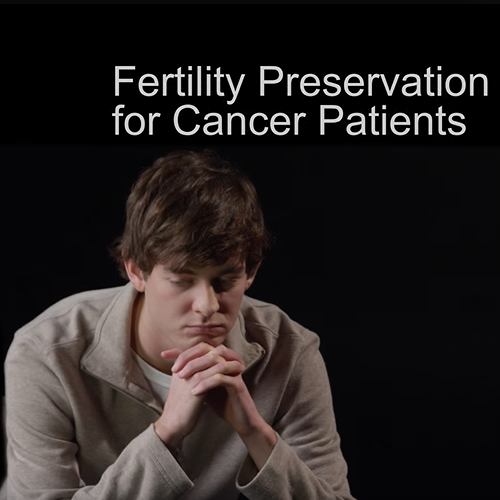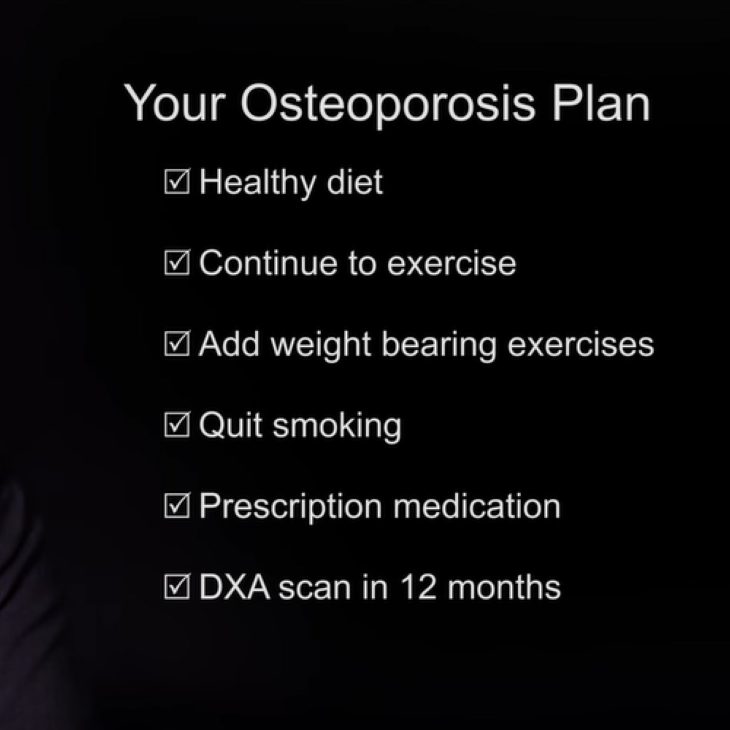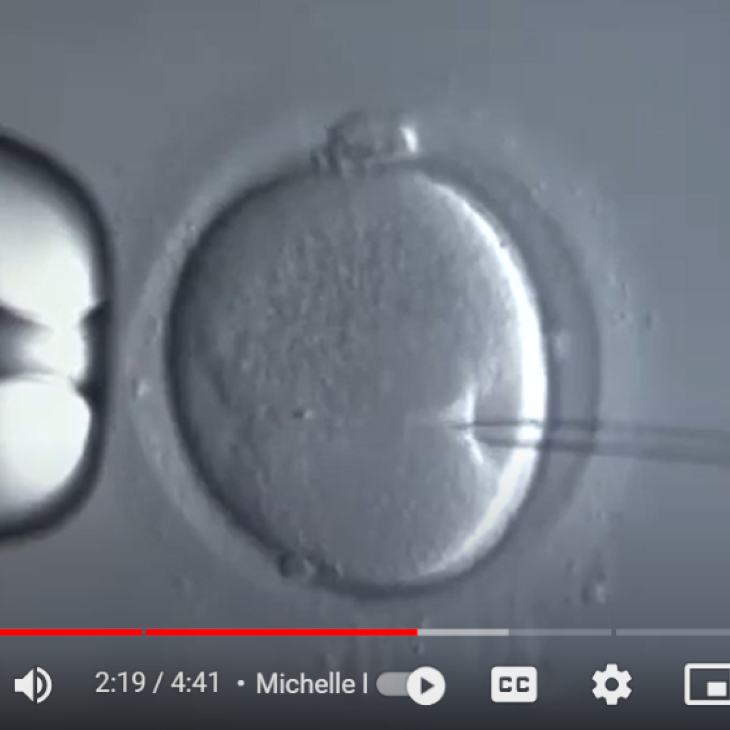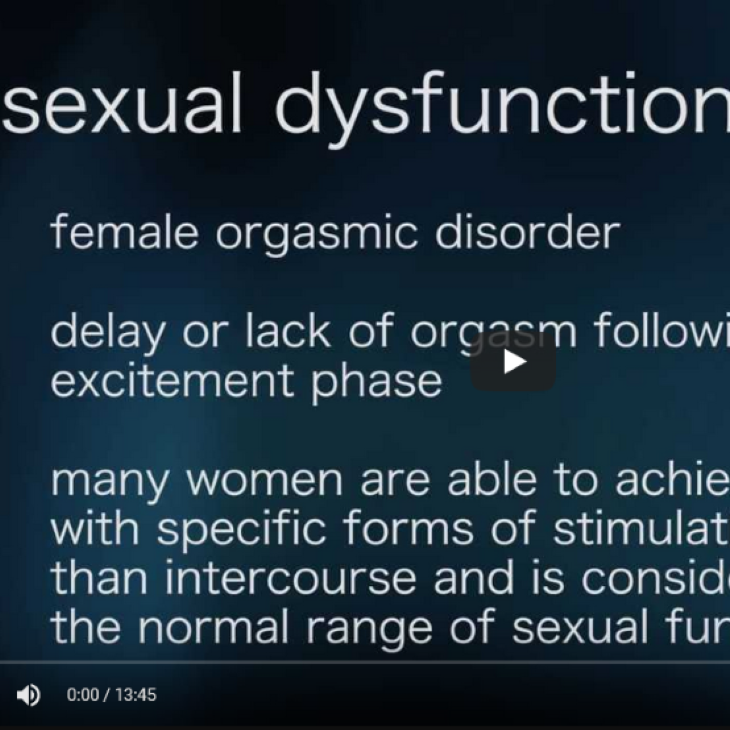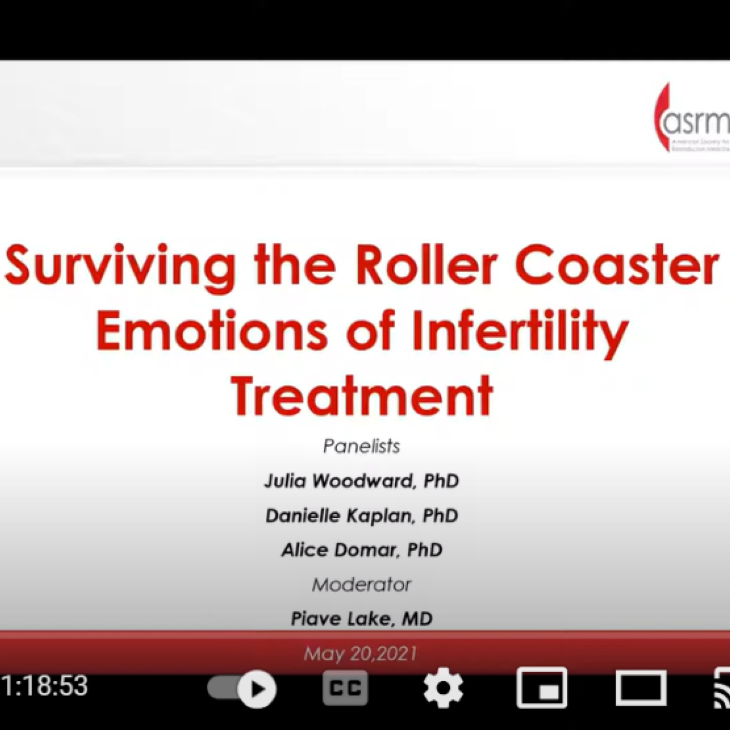Multiple Pregnancy
Transcript
Multiple Pregnancy is a pregnancy that includes more than one fetus and is much more common today than in the past. As attractive and efficient as a multiple pregnancy may sound, there can be significant risks associated with carrying, delivering, and raising multiple children. The goal is one healthy baby at a time.
The idea of having twins, or even triplets, can be an exciting prospect, and a chance to jump start a family may sound appealing to couples struggling with infertility. A multiple pregnancy is a pregnancy that includes more than one fetus, and are much more common today than they were in the past.
As attractive and efficient as a multiple pregnancy may sound, there can be significant risks associated with carrying, delivering and raising multiple children. This video is designed to provide you with some of the answers you may be looking for, and will explore the statistics, health and psychological risks to parents, children and siblings, and other issues surrounding multiple pregnancies and beyond.
There are many reasons why there are more multiple births today. Many women are waiting until they are older to have children and more women are receiving infertility treatment, which carries a higher risk of multiple pregnancy than natural conception.
According to US health statistics,
- The twin birth rate has increased by over 75% since 1980.
- The rate for high-order multiples- triplets, quadruplets or more- rose much faster than for twins
- However the rate for high-order multiples has slowed since 2004.
Let’s begin with some facts about the twinning process.
There are two types of twinning: identical and fraternal. Identical (or monzygotic) twinning occurs when a single fertilized egg divides (mono = one, zygote = fertilized egg). The embryos that result are the same sex and are genetically identical. Most are twins, but very rarely, triplets can result. Monozygotic multiples usually share a placenta and a small number even share the same amniotic sac. Fraternal twinning, also called non-identical twinning, occurs when separate eggs are each fertilized by a separate sperm. Two embryos are called dizygotic (di = two), three are called trizygotic (tri = three). These are not genetically identical, and can be the same or different sex. Most of the time, this is the type of twinning that occurs from infertility treatments and assisted reproduction procedures.
Sometimes, very early in a twin pregnancy, one of the fetuses “disappears.” This is referred to as the “vanishing twin syndrome.” Even after ultrasound has shown fetal heart movement in twins, spontaneous loss of one of the fetuses occurs in up to 20% of twin pregnancies. Spontaneous losses are even more common in triplet and quadruplet pregnancies. A fetal loss rate of 40% may occur in pregnancies with triplets or more. A woman may or may not have vaginal bleeding when a fetus vanishes in the first trimester. Usually, the remaining fetus or fetuses continue to develop normally.
Ultrasound examinations performed early in pregnancy occasionally may fail to identify all fetuses. An “appearing twin” may be found after the 5th week in nearly 10% of fraternal twin or multiple pregnancies and in over 80% of cases of identical twins. After 6 to 8 weeks, ultrasound should provide an accurate count of the number of fetuses.
How common are spontaneously conceived multiple pregnancies?
Naturally, twins occur in about one in 250 pregnancies, triplets in about one in 10,000 pregnancies, and quadruplets in about one in 700,000 pregnancies. The main factor that increases your chances of having a multiple pregnancy is the use of infertility treatment, but there are other factors.
Race, age, heredity, or having other children influences a woman’s chance of having fraternal twins, but not identical twins. Infertility treatment increases your risk of having twins, both identical and fraternal.
What is the role of fertility drugs and Assisted Reproductive Technology in causing multiple pregnancy?
Multiple pregnancy is more common in women who are treated with fertility medications to induce ovulation or superovulation. Of women who get pregnant with clomiphene citrate, 2.6% to 8% have multiples, but only about 1% have triplets or more. Use of drugs to cause superovulation has caused the vast majority of the increase in the multiples. Approximately 30% of pregnancies resulting from gonadotropins are multiples due to the release of more eggs. While most of these pregnancies are twins, up to 5% are triplets or other high-order multiples.
Assisted reproductive technology (ART) procedures such as in vitro fertilization (IVF) also contribute to the multiple birth rate. The risk of multiple pregnancy increases along with the number of embryos transferred. In the United States, the number of triplet and higher pregnancies has declined in the last several years due to the efforts of the ASRM and SART to educate its members and publish guidelines on the number of embryos to transfer in different situations. These high-order multiples are now relatively infrequent after ART procedures, but twins are still quite common at about 25%-30% of births.
Why should a couple be concerned about having a multiple pregnancy?
The risks for mother and infants increase with each added fetus. Singleton infants, an infant resulting from one fetus developing in the uterus, are typically born 37 to 42 weeks from the time of the last menstrual period. Multiples on the other hand almost always deliver early. As the number of fetuses increases, the expected length of the pregnancy decreases. The average is 35 weeks for twins, 33 weeks for triplets, and 30 weeks for quadruplets…… which are all preterm births.
Preterm birth poses one of the greatest risks with a multiple pregnancy. Nearly 60% of twins are born preterm, compared to about 10% of singleton pregnancies. Over 90% of triplets and other high-order multiples are born preterm.
Currently, there are no effective treatments to prevent multiples from being born too soon. Sometimes, preterm delivery can be delayed by a few days or more if it is detected early. Each day gained provides time for valuable fetal growth and development. Once a woman is in advanced labor, delivery cannot be stopped. In rare instances, delivery of a second twin can be delayed after the birth of the first twin. This delay, when possible, allows for continued growth in the protective environment of the uterus.
Almost all other pregnancy complications including preeclampsia and gestational diabetes are more common in multiple pregnancy. These can cause serious health complications for both mother and babies. Severe high blood pressure as well as stroke and hemorrhage occur in a significant number of pregnancies complicated by these conditions, sometimes with long-term disability or even death. Other complications that are rare in singleton pregnancies are more likely with a multiple pregnancy.
There is also a greater risk for fetal death, which is when a fetus dies during pregnancy. This risk is greater for multiples that share a common placenta or amniotic sac. Overall, fetal death occurs in about 1.5% of twins and less than 3% of triplets.
Birth defects are slightly more common in multiples than singleton infants, but are 3 to 5 times more likely in identical twins.
Most multiples are delivered by cesarean section, especially high-order multiples. Even with twins, the option of a vaginal delivery depends on the size, position, and health of the infants, as well as the size and shape of the mother’s pelvic bones.
What are the problems with babies who are premature?
The increased risk of preterm birth associated with multiple pregnancy means that your chances of delivering preterm are higher. You should be aware of the increased associated risk for severe complications or early death of preterm infants.
A premature baby’s lungs, brain, circulatory system, intestinal system, and eyes may not be fully developed. About half of the deaths in premature babies are due to respiratory distress syndrome, caused by immature lungs. Brain damage is responsible for almost 10% of premature newborn deaths. Prematurity also may result in visual impairment or blindness. Birth defects and stillbirths account for about 30% of the deaths in twins and other multiples. Neonatal intensive care unit admission is required for about 25% of twins and 75% of triplets.
Birth weight is another challenge for multiples. Over half of twins are born weighing less than 5.5 pounds (lb.) [2,500 grams], which is considered low birth weight. The average birth weight is approximately 4 lb. (1,660 grams) for triplets and 3 lb. (1,300 grams) for quadruplets. Survival rate decreases with decreasing birth weight. The overall survival rate is 85% for newborns over 2 lb., 3 oz. (1,000 grams) but less than 40% for those under 2 lb., 3 oz. Birth weight also corresponds closely to the severity of disability throughout the childhood years. Disability occurs in almost 25% of children with a birth weight less than 2 lb. As noted above, the average birth weight even for quadruplets is well above this number.
Cerebral palsy is more common in infants from multiple births. The risk is 6 times higher in twins than singletons and the rates are even greater for triplets and other high-order multiple births. Although cerebral palsy is more common in premature and low birth weight infants, it is also more common in multiples with normal birth weight.
Despite these numbers, it is important to note that the vast majority of multiple-birth infants do survive. Furthermore, compared to singletons with the same birth weight, there is no significant increase in the incidence of chronic lung disease or brain, eye, or gastrointestinal problems in multiple-birth infants.
What are the psychological and social implications of delivering more than one child at a time?
The effect of multiple births on family life is substantial. OK The impact of a multiple birth clearly affects the parents, but also the infants, other siblings, and the extended family. The additional costs of feeding, clothing, housing, and caring for multiple children can become a financial burden. Meeting the needs of several infants at once can create stress and parents report sleep problems, anxiety, and marital difficulties. Postpartum depression also is more common in both the mother and the father and may be long-term. If both parents work, costs for day care are substantially increased, sometimes to the point of being cost-prohibitive. Psychological counseling and support groups (many of which can be found online) may provide a lifeline for the parents of multiples, who may feel isolated or depressed. Most physicians can provide appropriate referrals to a mental health professional or a support group. For more information, see the ASRM Patient Fact Sheet titled Challenges of Parenting Multiples.
Considering these difficulties, are there ways to avoid a multiple pregnancy?
Since the most common cause of multiple pregnancy is related to infertility treatment, the answer is yes. A thoughtful, evidence-based approach should be used in these treatments.
For gonadotropin and intrauterine insemination cycles, careful medication dosage and monitoring of the woman’s ovarian response are critical in limiting the risk for multiples. Most doctors monitor women with ultrasound examinations and blood tests. A woman with a large number of ovarian follicles or high hormone levels has an increased risk of a multiple pregnancy, and the stimulation cycle may be canceled to avoid the risk. No proven way of decreasing the chances of having a multiple pregnancy with superovulation has been identified. However, preventing fertilization when more than three follicles develop is helpful in reducing the chance of high-order multiples.
A procedure called multifetal reduction is sometimes used with high-order multiple pregnancy. This involves termination of one or more fetuses in the first trimester of pregnancy to help increase the chances for the remaining fetuses to be healthy. However, multifetal reduction does have risks including loss of all fetuses. It may also be a difficult ethical decision for parents.
In the United States, physicians and patients jointly decide how many embryos to transfer in IVF cycles. However, it is important to note that the ASRM Practice Committee has published recommendations on the number of embryos to be transferred based on patient age, embryo quality, and other criteria. Although not required to follow these guidelines, most clinics use them as the basis for making the decision on how many embryos to transfer. The rate of high-order multiple pregnancies has decreased markedly since the publication of these guidelines.
However, more remains to be done. The ultimate goal of ART is to achieve a high pregnancy rate with a single fetus after transferring a single embryo. For certain groups of women, pregnancy rates with the transfer of one embryo are as good as the rates with transfer of several embryos. Approximately 10% of embryo transfers in the United States are now performed using elective single embryo transfer, or “eSET”.
The objective of infertility treatment is the birth of a healthy child. Since multiple pregnancies and their complications are an inevitable risk of fertility therapies, education about these risks is crucial prior to treatment. In a small percentage of patients, treatment results in a multiple pregnancy that may place the mother and the babies at increased risk for an unhealthy outcome. Ultimately, prevention is the key to reducing the risk of multiple pregnancy. Certainly, many couples undergoing IVF should consider eSET if offered as an acceptable alternative to multiple embryo transfer. Careful discussion with your doctor is recommended so that you understand these risks prior to treatment.
Multiple Births or Multiple Gestation
Find a Health Professional


